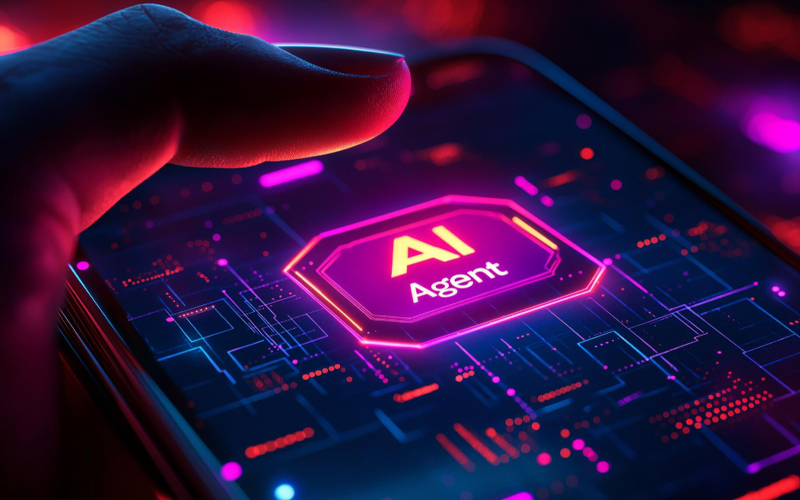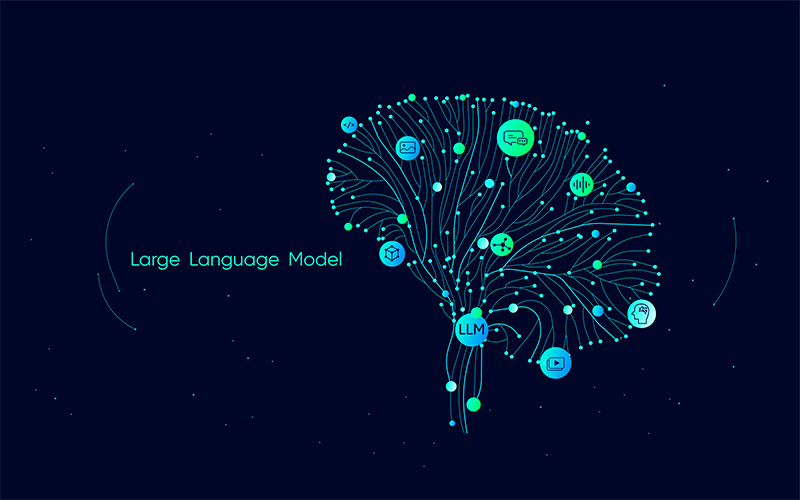Most conversations about artificial intelligence jump straight into tools, models, or programming choices. Yet business leaders often ask a more fundamental question: What does it actually take to build an AI system that works reliably in real-world environments?
This blog covers the end-to-end journey of developing an AI model, from acquiring data to ensuring long-term performance.
Artificial Intelligence has moved from research labs into everyday life, shaping decisions, powering recommendations, detecting risks, enhancing creativity, and supporting critical operations across industries. Yet despite its growing impact, the way AI is understood and taught remains fragmented. Many discussions focus on programming languages, model names, or tools, without addressing the structured sequence of steps that transform raw data into reliable, intelligent systems.
A model does not become intelligent because it was trained. It becomes intelligent because it was designed, prepared, evaluated, aligned, deployed, and continuously improved through a carefully guided process.
To create clarity around this journey, the A–Z AI Model Lifecycle Framework lays out 26 sequential stages that represent the complete path from raw data to operational intelligence. Each stage represents a core concept essential for creating AI that is accurate, efficient, interpretable, scalable, and aligned with real-world needs.
This framework is:
- structured enough for academic and professional learning
- practical enough for industry application
- neutral to technology stacks, programming languages, and platforms
- adaptable to both traditional machine learning systems and modern generative models
The goal is not merely to teach what AI is but to clarify how AI is built, step by step, decision by decision. The A–Z sequence transforms AI development from a black box into a clear, guided journey that can be understood, replicated, governed, and improved.
A–Z AI Model Lifecycle Framework
|
|
|
|
A |
Acquisition |
Data Foundation |
Identify and gather required data sources. |
B |
Benchmark |
Assessment |
Establish initial performance reference. |
C |
Curation |
Data Quality |
Prepare and refine datasets for modeling. |
D |
Descriptive Analysis |
Insight Discovery |
Understand underlying patterns and trends. |
E |
Encoding |
Representation |
Convert information into machine-readable formats. |
F |
Feature Engineering |
Signal Extraction |
Highlight attributes relevant to prediction. |
G |
Ground Truth |
Validation Base |
Determine correct expected outputs. |
H |
Hypothesis Modeling |
Model Design |
Select suitable model family and structure. |
I |
Initialization |
Architecture Setup |
Configure starting learning conditions. |
J |
Jacobian Optimization |
Learning Core |
Adjust model behavior iteratively. |
K |
Knowledge Transfer |
Efficiency Enhancement |
Leverage pre-trained capabilities. |
L |
Loss Function |
Error Measuring |
Define how correctness is assessed. |
M |
Model Training |
Core Learning |
Train the system through repeated exposure. |
N |
Normalization |
Stability Control |
Standardize values to improve training behavior. |
O |
Overfitting Control |
Generalization |
Ensure model adapts to new data. |
P |
Performance Review |
Quality Check |
Measure effectiveness. |
Q |
Quantization |
Optimization |
Improve computational efficiency. |
R |
Reinforcement Tuning |
Behavioral Tuning |
Enhance model alignment through feedback. |
S |
Scalability Planning |
Deployment Readiness |
Prepare for varied operational environments. |
T |
Transformer Integration |
Capability Expansion |
Enhance understanding and contextual processing. |
U |
User Alignment |
Human-Centric Fit |
Ensure output relevance and ethical design. |
V |
Vector Embedding Space |
Knowledge Retention |
Maintain internal semantic relationships. |
W |
Workflow Deployment |
Real-World Activation |
Integrate the model into operational systems. |
X |
Explainability |
Transparency |
Improve interpretability and trust. |
Y |
Yield Monitoring |
Lifecycle Measurement |
Track production performance over time. |
Z |
Zero-Drift Update |
Sustainability |
Maintain accuracy with ongoing adaptation. |
A — Acquisition: All intelligence begins with data. We gather information from sensors, databases, images, text, transactions — wherever truth leaves clues.
B — Benchmark: Before improving anything, we must know the current starting point. We must ask the question: what accuracy do humans or existing systems achieve today?
C — Curation: We clean, filter, correct, and structure the data. The most advanced model is powerless if it feeds incorrect/unclean data.
D — Descriptive Analysis: We explore the patterns: averages, trends, outliers. This step gives us the intuition behind the problem.
E — Encoding: Computers don’t understand language, images, or sound. So, we convert all data into vectors and numbers.
F — Feature Engineering: We highlight the most meaningful attributes. Good features can sometimes outperform a complex model.
G — Ground Truth: This is the answer key. If the truth is wrong, the AI learns the wrong world.
H — Hypothesis Modeling: We choose the type of model based on problem nature — CNN for vision, Transformers for language, RNN for sequences, etc.
I — Initialization: We set the initial neural weights — the starting brain state.
J — Jacobian Optimization: This is how learning happens. The model adjusts itself by comparing predictions with truth and correcting errors.
K — Knowledge Transfer: We don’t always start from scratch. We borrow intelligence from pre-trained models.
L — Loss Function: We define how the model measures its own mistakes.
M — Model Training: Now the model practices, learns, adapts — thousands or millions of times.
N — Normalization: Data is scaled so learning is smooth and stable.
O — Overfitting Control: We prevent the model from simply memorizing examples. Real intelligence is the ability to handle new situations.
P — Performance Metrics: We evaluate how well the model performs, using accuracy, F1 score, recall, etc.
Q — Quantization: We compress the model so it can run on phones, browsers, robots, edge devices, not just GPUs.
R — Reinforcement Tuning: We refine the model’s decisions using feedback loops. This step aligns AI with human values.
S — Scalability Planning: We ensure the system handles real-world load, not just lab conditions.
T — Transformer Integration: Modern AI uses attention-based learning for deeper understanding.
U — User Alignment: AI should work the way humans think — ethically, safely, respectfully.
V — Vector Embedding Space: This is where AI stores meaning, relationships, analogies — its internal memory map.
W — Workflow Deployment: Finally, the AI model is deployed into real systems — apps, dashboards, websites, automation workflows.
X — Explainability: A responsible AI must be able to answer: “Why did I make this decision?”
Y — Yield Monitoring: Once alive in the real world, AI must be continuously observed. Data changes. People change. Context changes.
Z — Zero-Drift Update: We retrain and evolve the model, so it never becomes outdated.
why this framework matters
Across industries, AI adoption is accelerating, but implementation maturity varies widely. Many organisations concentrate almost entirely on M - Model Training, overlooking the upstream and downstream activities that determine whether a system will perform reliably outside controlled environments.
The A–Z lifecycle helps address this gap by:
- offering a common structure that reduces ambiguity in AI development
- creating a shared vocabulary across data, engineering, product, and risk teams
- supporting leaders in understanding operational and compliance considerations
- strengthening governance through clear checkpoints and decision gates
- enabling responsible AI practices from the outset rather than as corrective measures
This structured approach also gives enterprises a practical lens to evaluate readiness:
Are data foundations strong?
Are evaluation and monitoring systems in place?
Are business expectations aligned with model capabilities?
By clarifying the full sequence rather than focusing on isolated steps, the framework promotes consistency, transparency, and more predictable outcomes in AI programmes.
the future of AI is not just smart, it is responsible
As AI becomes embedded in products, operations, and customer interactions, the expectations placed on these systems continue to rise. High performance is necessary, but it is not the only measure of success. Organisations also need confidence that their models behave consistently, can be interpreted when required, and adapt appropriately as data, user behaviour, and market conditions evolve.
The goal is not just to create AI that is powerful. The goal is to create AI that is understandable, trustworthy, aligned with human values, evolving with time.
Responsible AI is not a separate layer added at the end of development. It is an approach that begins at design stage, influences evaluation and deployment, and continues throughout the lifecycle of the system. When teams focus on transparency, reliability, and alignment from the start, AI solutions become easier to govern and scale.
A structured lifecycle such as the A–Z framework supports this shift by giving enterprises clear checkpoints and decision paths. It encourages teams to look beyond model accuracy and consider operational readiness, human alignment, long-term maintenance, and risk controls. This integrated view helps organisations create AI that delivers sustained value while remaining accountable to users, regulators, and business objectives.
The future of AI will be defined by how well it balances capability with responsibility. Systems that can explain their decisions, adjust to changing conditions, and operate with clarity will shape the next phase of digital transformation.







